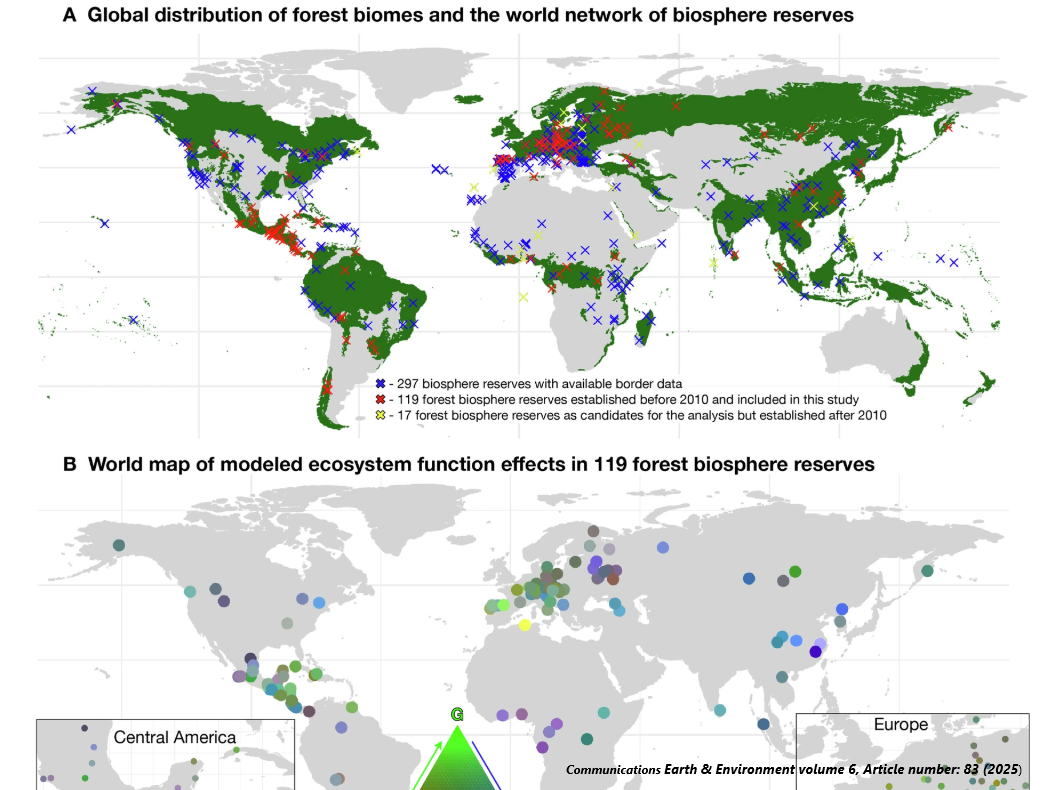
UNESCO biosphere reserves serve as learning areas for sustainable development, where preserving ecosystem functionality is an imperative. However, this critical assumption has yet to be thoroughly examined. To address this knowledge gap, we investigated differences in satellite-derived proxies of ecosystem functions in forests between inside and surrounding areas of biosphere reserves, globally. Our findings based on linear mixed effect models show that (i) only 18 of 119 biosphere reserves exhibited higher values for all forest ecosystem function proxies inside the reserves compared to outside, (ii) smaller reserves in fragmented forestscapes were more affected by hot day temperatures, and (iii) greater forest cover correlated with increased ecosystem functioning across all biomes. This study underscores the potential significance of biosphere reserves to biodiversity conservation efforts and the need for the integration of satellite-based, outcome-oriented proxies of ecosystem functions in assessments of protected area effectiveness.














